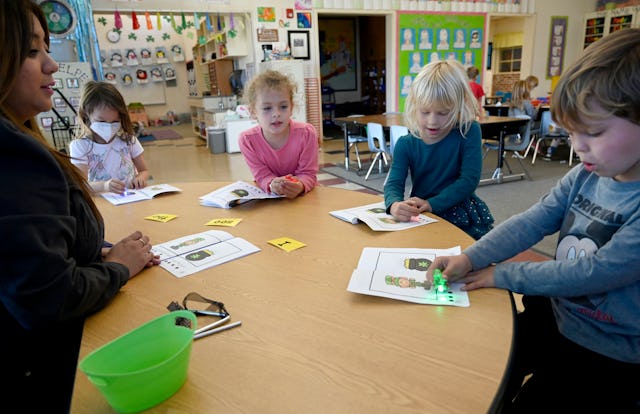What The CDC’s New COVID Guidelines Mean For Kids Heading Back To School
The government agency has eliminated the need to quarantine after a COVID-19 exposure.

Kids are heading back to school for the 2022-23 school year, and that means new friends, new teachers, and a return to some sort of family schedule. It also means a return to greater COVID-19 concerns and the constant monitoring of our kids’ health.
For almost three years now, parents have had to keep a close eye on not just ourselves and our kids’ health but also for the Centers for Disease Control and Prevention (CDC) guidelines for new information on how to proceed with COVID-19 infections and exposures.
Well, the agency just released a pretty huge update and it will likely affect your kids’ school year as well as your parenting decisions.
In the new guidelines, most former tight protocols have been loosened and the decision as to how to proceed after an infection and/or exposure have been left up to local officials and individuals.
The new updates to existing guidelines are a response to the country’s immunity level, according to Greta Massetti, a senior epidemiologist at the CDC.
"We also have a better understanding of how to protect people from being exposed to the virus," Massetti said in an official statement released by the CDC. "This guidance acknowledges that the pandemic is not over, but also helps us move to a point where COVID-19 no longer severely disrupts our daily lives."
The CDC reiterated the importance of being up to date on vaccinations, masking in high-transmission areas, and isolating if you do have COVID-19. However, there are some major changes in guidelines if you were exposed to COVID-19.
The CDC is no longer advising students or staff members who are exposed to COVID-19 to quarantine. Instead, they advise that people who were exposed wear face coverings for 10 days and get tested. "Test-to-stay" programs are also going away. These programs required exposed, unvaccinated children to test frequently before returning to the classroom regardless of if they were showing symptoms or not.
So, what does this mean for parents? If your child was exposed at school, they’ll no longer need to be kept home for 10 days if they’re symptom-free and testing negative regardless of vaccination status.
Though the CDC has loosened and eliminated many previous COVID-19 guidelines, note that the CDC still recommends masking indoors in areas of the country where transmission rates are high. This includes over 40% of the country at the moment.
The agency also asked schools to ensure that masking polices assist students with disabilities or those who are immunocompromised. The agency aims to encourage teaches and administrators to include these students in everyday school life instead of isolating them due to their high-risk status.
"Students with immunocompromising conditions or other conditions or disabilities that increase risk for getting very sick with COVID-19 should not be placed into separate classrooms or otherwise segregated from other students," the agency said.
For kids who test positive for COVID, the rules remain the same: they should stay home for five days (or more, if symptoms persist) and wear a mask for ten. They do not have to test negative to return to school if they aren’t exhibiting symptoms after five days.
Although routine testing is no longer recommended for kids without symptoms, the CDC advises that in high-risk areas, school administrations consider screening kids before large events like field trips, sporting events, or prom — and that events should be canceled depending on infection rates. Routine testing can also help if done before the first day of school or before a return from vacation.
While these new guidelines may give some parents relief over the stress of keeping their kids home for two weeks, it could mean anxiety for others who now will rely even harder on their own gut to keep their kids safe and healthy.
As always, connect with your kids’ schools and day cares to learn about COVID policies that may be separate from CDC recommendations.